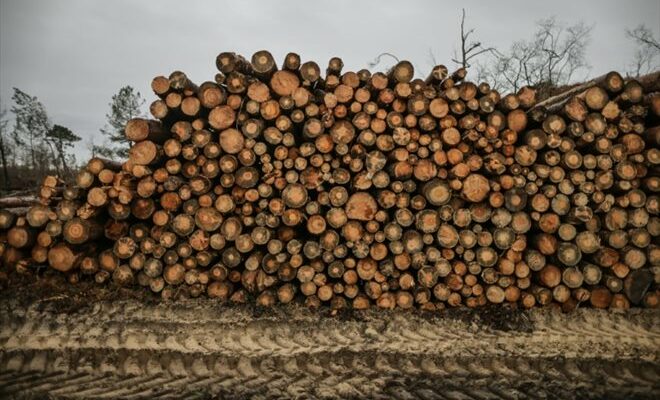France is keeping pace with plans to decarbonize its economy, but its territory’s forests and soils are not absorbing as much CO2 as expected (AFP/Archives/PATRICK HERTZOG)
France is keeping pace with plans to decarbonize its economy, but its forests and soils are not absorbing as much CO2 as expected, narrowly preventing the country from meeting its climate targets and catching up with the delay accumulated in the previous decade. .
Greenhouse gases emitted by human activity in France have fallen in almost all sectors of the economy (agriculture, transport, industry, etc.), falling by 5.8% in France in 2023 compared to 2022. , announced Thursday Citepa, the organization responsible for the inventory of French greenhouse gases, in a revision of its estimates published in March.
This figure, which the government is proud of after a decline of 2.7% between 2021 and 2022, was revealed on Wednesday by Prime Minister Gabriel Attal during an electoral meeting in Mayenne.
In 2023, France thus released into the atmosphere the equivalent of 373 million tonnes of carbon dioxide (Mt CO2e), “below the record minimum level of 2020” during the major slowdown of the economy during the pandemic.
But this new record is not enough: by subtracting from French emissions the quantity of CO2 which is naturally absorbed by forests and soils (called carbon sinks), “the 2019-2023 carbon budget is not respected”, warns the Citepa. Trees, through photosynthesis, capture carbon from the air to store it in their roots and branches.

In total, over these five years, France’s net emissions reached an average of 380 Mt “against a target of 379 Mt, i.e. an excess of 1.4 Mt” (0.4%) (AFP/Archives/Shammi MEHRA)
In total, over these five years, France’s net emissions reach an average of 380 Mt “against a target of 379 Mt, i.e. an excess of 1.4 Mt” (0.4%), indicates the organization.
– Tree mortality –
France’s climate roadmap, set by its second National Low Carbon Strategy (SNBC) 2019-2023, planned to reach between 40 and 45 Mt of CO2 absorbed by forests and soil by 2030.
But this carbon sink “has been considerably reduced” and has only absorbed “around 20 Mt CO2 in recent years, in particular due to the combined effect of repeated droughts since 2015, diseases affecting the rate of tree mortality, and an increase in wood harvests”, explains Citepa.
And the future is uncertain: according to a recent IGN study, “carbon sequestration in forests continues to erode” in the vast majority of projections by 2050. Including if the government manages to meet its objective to plant a billion trees by 2032.

“The degradation of the carbon sink is also a political choice since the government stubbornly wants to increase the wood harvest while all the signals are red,” reacted Sylvain Angerand of the Canopée association (AFP/Archives/Thibaud MORITZ)
“If we cannot act on the mortality of trees, on their growth which is less strong because of droughts, the degradation of the carbon sink is also a political choice since the government persists in wanting to increase the wood harvest then that all the signals are red,” Sylvain Angerand of the Canopée association responded to AFP.
“This reduction in the sink implies an even greater effort on other sectors in order to achieve carbon neutrality”, recalls Citepa, while the 3rd version of the SNBC, announced as “imminent” for months by the government, is always keeps you waiting.
– Economic downturn?-
Citepa, however, notes an “unprecedented situation where all major emitting sectors participate in a reduction in emissions, in a particular context (inflation, resumption of nuclear production, etc.) but without a major economic crisis”.
These reductions are “good news”, but “largely linked to cyclical factors such as the decline in economic activity, high energy prices or the restart of nuclear reactors” to the shutdown in 2022, puts into perspective from AFP Anne Bringault, from the Climate Action Network.
The government “should work to implement the additional measures necessary for the trajectory to continue, particularly in transport, the leading emitting sector where the drop in emissions is only 3%, and in international air transport which saw an increase in emissions of 16%,” she added.
France, which must align with the European objective of -55% emissions by 2030 compared to 1990, had already failed to respect its first carbon budget (2015-2018) and had revised its ambitions decline in 2019.
© 2024 AFP
Did you like this article ? Share it with your friends using the buttons below.




